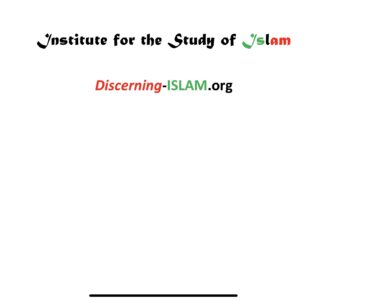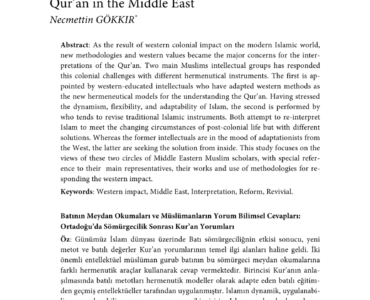
Prophets
Narratives about prophets and messengers are found throughout the Qurʿān and Muslim religious literature in general. Prophets and figures ranging from Adam to Jesus and the apostles are dealt with at length in the Qurʿān. Various Muslim literary genres such as exegetical commentaries, collections of sayings of the prophet Muḥammad, historiographical works, and the literary genre called qiṣaṣ al-anbiyāʿ (tales of the prophets) also attest to the diffusion of many reports and traditions about the prophets who preceded Muḥammad. Further, the relevance of the topic is not limited to early and medieval times but reaches modern and contemporary periods both in literature and in the devotion paid to the tombs and shrines associated with the prophets.
In The Qurʿān
The Qurʿān mentions by name, in addition to Muḥammad, twenty-four prophets and alludes to others, among the the most significant of whom are Moses, Abraham, and Jesus. A nearly complete biography of Moses is included, and some episodes are repeated often in the Qurʿān: for example, his infancy, his killing of an Egyptian, the exile, the burning bush, the dialogue with God, and the final confrontation with Pharaoh (e.g., 7:103–138; 20:9–48, 26:10–68) leading to the exodus from Egypt and the wandering with the Israelites where the story of the golden calf appears (e.g., 20:85–98).
In relation to Abraham, major motifs in the Qurʿān tell of his confrontation with his people over their idolatry (21:51–71; 26:69–104), his role in the construction of the Kaʿbah in Mecca (2:124–132), and the significance of his pure monotheism which makes him an ideal precursor of Muḥammad (e.g., 3:65–68). Jesus is referred to mainly in connection with the stories of the nativity and of his mother the Virgin Mary (3:35–48; 19:16–34), but there are also some problematic passages dealing with his death (3:48–55) and several polemical verses against belief in the trinity (e.g., 2:116).
Other prophets to whom the Qurʿān devotes notable space are Adam (e.g., 2:30–38; 7:11–25); Noah (7:59–64; 11:25–49) Lot (11:77–83), Joseph (12:3–101), David (21:78–80; 38:17–26) and Solomon (27:15–44). The Qurʿān also names Ishmael, Isaac, Jacob, Aaron, Job, Jonah, Zechariah, John the Baptist, Elijah, Elisha, the three “Arabian” prophets Hūd, Ṣāliḥ, and Shuʿayb, the problematic Idrīs — usually identified with Enoch — and Dhū al-Kifl (literally, he who holds a security or pledge).
The peculiar elliptical and fragmentary style of the Qurʿān shaped the stories about the prophets; rather than being historically linear narratives, the Qurʿānic passages reflect a dramatic construction whose aim is to underline the prophets’ relation to God Almighty and at the same time deal with questions of relevance to the mission of Muḥammad when he was in Mecca and Medina. Some Qurʿānic verses serve to define the nature of prophethood. This explains the early emphasis on stories related to the failure of the prophets and consequent punishment of their peoples, and the later significance accorded to the biblical heritage and to polemics directed at other religious communities. The terms “prophet” and “messenger” are rendered by distinct terms in Arabic, nabī and rasūl, and some verses define — or at least contain an indication of — the prerogatives accorded to each, such as their reciprocal relations (2:253), the fact that prophets have a Book and Wisdom (e.g., 3:79), and the fact that Muḥammad is the Seal of the Prophets (33:40).
In The Literature
The important role of prophets and messengers in the Qurʿān paved the way for the enrichment of the traditions and literature that spread in the generations following Muḥammad’s death. According to the Islamic tradition, there were after Muḥammad two channels through which a growing body of stories and legends dealing with topics ranging from the creation of the world to Jesus circulated among Muslims: the first consisted of storytellers, and the second of converts to Islam from Judaism and Christianity who were considered the leading experts on the Biblical stories. Through these channels and the activity of early Muslim generations a growing number of reports about prophets and messengers of various origins started to circulate and were included in the first Muslim literary works.
Traditions and legends regarding the prophets recur, in fact, in every literary genre, but they are especially prominent in four important genres: Qurʿānic exegesis; collections of the sayings of Muḥammad (ḥadīth); historiography; and the stories of the prophets (qiṣaṣ al-anbiyāʿ). For various reasons these genres came to include extra-canonical stories and accounts of the prophets. Medieval Muslim exegetes of the Qurʿān needed extensive reports to complete the sacred text or to clarify obscure details. In the sayings of Muḥammad, the names of the biblical prophets are often cited incidentally but are relevant to defining the mission of Muḥammad himself or to clarifying a particular detail of the faith. In the accounts of universal history the experiences of the prophets often represent the most substantial part of pre-Islamic history (e.g., al-Ṭabarī). Lastly, in the stories of the prophets, material of diverse origins is referred to in a complete narrative from the moment of creation to the time of Jesus.
Stories Of The Prophets
The first works of the qiṣaṣ al-anbiyāʿ genre have been lost or have been only partially preserved. According to Islamic tradition, the first author of a book dedicated exclusively to the stories of the prophets was Wahb ibn Munabbih (d. c.730), a Yemeni descendant of a family of Persian origin. His qiṣaṣ al-anbiyāʿ work is not extant, so only an approximate reconstruction of it is possible on the basis of what is said by authors writing at least a century later. The first attested and partially preserved collections of the stories of the prophets are those of Isḥāq ibn Bishr (d. 821) and ʿUmārah ibn Wathīmah al-Fārisī (d. 902). The works of al-Thaʿlabī (d. 1035) and al-Kisāʿī (twelfth century) constitute the major examples of the genre and are the most renowned works dealing with the topic.
These works and later examples of qiṣaṣ al-anbiyāʿ conventionally display a fixed structure describing the story of the world from the creation to the story of Jesus and the apostles. Chapters dedicated to the various prophets collect traditions from a range of sources and attribute these to figures and authors of previous generations, along with Qurʿānic quotations. The diffusion of these early works and the continuous authorship of new ones is attested through the medieval period. Examples were also composed in Persian and Turkish and later also in other Muslim languages. At the same time, the elaboration of various traditions and legends on the prophets, and even the introduction of new ones in Sunnī and Shīʿī literature, continued throughout the Middle Ages.
Present-Day Attitudes
The attitude of the contemporary Muslim world toward these figures and the related literature varies. For some Muslims, the rich traditions and medieval literature about prophets and messengers have constituted a problem. The accusation, which originated with Ibn Taymīyah and Ibn Kathīr in the fourteenth century, that biblical and extraneous material on this topic was introduced into Muslim literature has gained currency from the beginning of the twentieth century on. Today, the accusation that a work is full of isrāʿīlīyāt (i.e., narratives of Jewish origin), is an easy way to dismiss traditions included in medieval works. Despite this, the fact that works on the topic are still being written demonstrates the popularity of the topic. Just as significant is that popular devotion to these figures has continued to the present. The proliferation of shrines and tombs related to the prophets and found throughout the Muslim world further demonstrates the continuing importance of their role in Muslim devotion.
Prophets
652 – 014
Last Updated: 07/2021
Copyright © 2017-2021o Institute for the Study of Islam (ISI) | Institute-for-the-study-of-Islam-org | Discerning Islam | Discerning-Islam.org | Commentaries on Islam | © 2020 Tips Of The Iceberg | © 1978 marketplace-values.org | Values In The Marketplace | are considered “Trade Marks and Trade Names” ®️ by the Colorado Secretary of State and the Oklahoma Secretary of State. All Rights Reserved.



